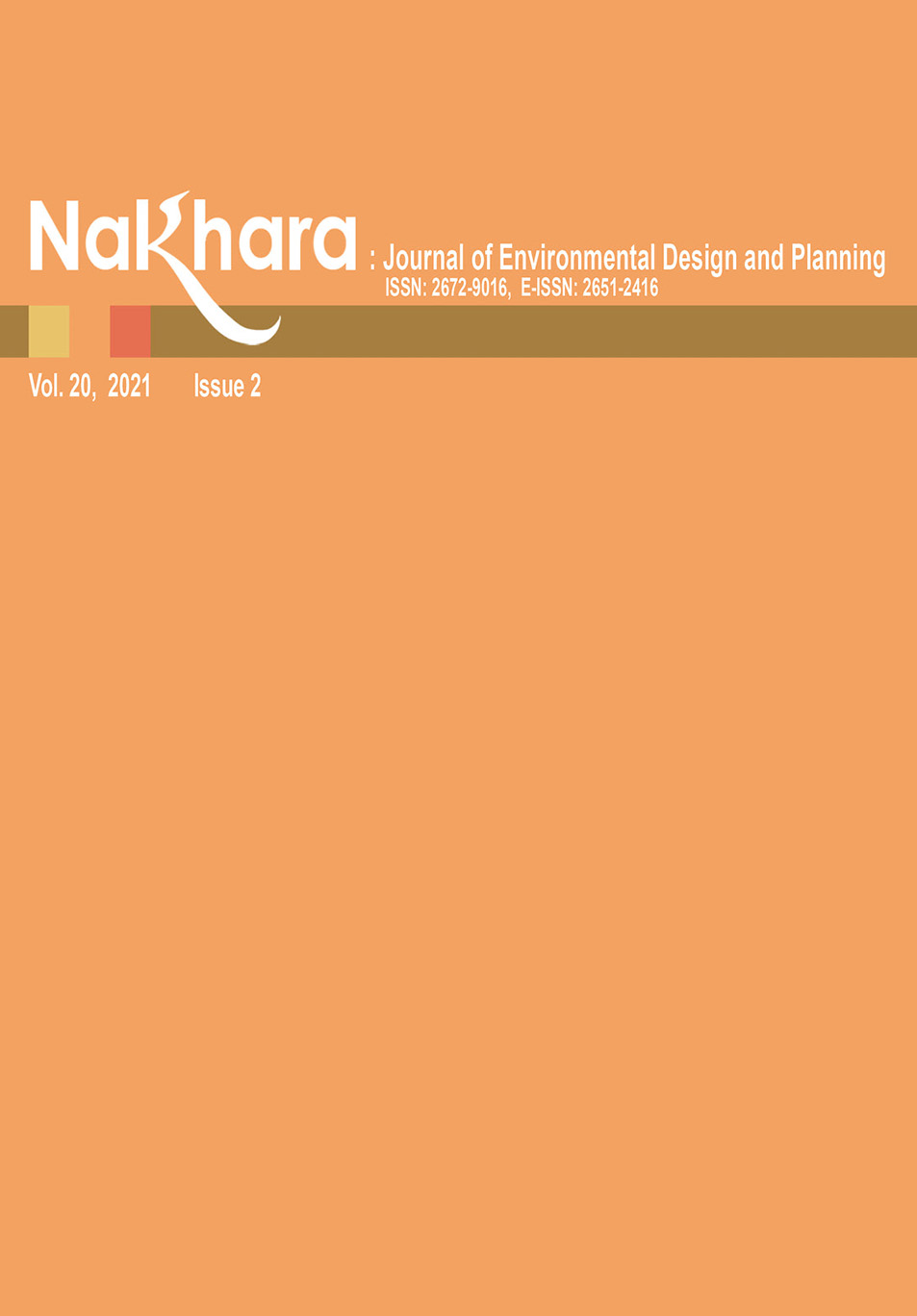Adaptive Vernacular: A Search for Future Houses in Eastern Region of Thailand
Main Article Content
Abstract
This study aims to explore ways in which contemporary vernacular houses can be created to be responsive to environmental, socio-cultural, and economic conditions. Within the selected three provinces of Chachoengsao, Prachinburi and Nakhon Nayok, our goal was to propose possible prototypes for contemporary vernacular houses that respond to current requirements while still sustaining their regional characteristics. Current problems and changing housing demands were studied along with input from local people. From field surveys and focus groups, the research found that neither “traditional” nor “modern” solutions will suffice, so the prototypes need to strike a balance between these models. Outcomes developed from this study involve house prototypes that are not models to be strictly copied, but possible creative guidelines which allow their owners to truly adapt to and transform for the future.
Article Details

This work is licensed under a Creative Commons Attribution-NonCommercial-NoDerivatives 4.0 International License.
References
Chaichongrak, R. (1996). Traditional Thai houses, Bangkok. The Association of Siamese Architects.
Chaichongrak, R., & Freeman, M. (2002). The Thai house: History and evolution. Asia Books. https://chula.idm.oclc.org/login?url=https://search.ebscohost.com/login.aspx?direct=true&db=cat05085a&AN=chu.b1626786&site=eds-live
Horayangkura, V., Inpuntung, V., & Chantavilasvong, S. (1999). The Status of academic outputs in architecture in Thailand. Thammasat Review, 4(1), 184–202. https://sc01.tci-thaijo.org/index.php/tureview/article/view/41010/33928
Inpuntung, V. (2002). Vernacular houses of the western region of Thailand. The Princess Maha Chakri Sirindhorn Anthropology Center.
Oliver, P. (2006). Built to meet needs: Cultural issues in vernacular architecture (1st ed.). Architectural Press.
Panin, O. (2002). Thai-Mon vernacular houses. Silpakorn University.
Panin, T. (2017). Adaptive vernacular: People participation and the search for future built environment in three regions of Thailand. Bangkok, Thailand.
Panin, T., Kasemsook, A., & Tandikul, C. (2010). The study on integrated approach in rural housing design: Central region. Bangkok, Thailand.
Sthapitanonda, N. (2017). Baan Thai Now: The book of traditional Thai house. Li-Zenn. https://chula.idm.oclc.org/login?url=https://search.ebscohost.com/login.aspx?direc(1st ed.) t=true&db=cat05085a&AN=chu.b2157442&site=eds-live
Tovivich, S. (2012). Reflection on practice: Integration of participatory design and community development in alternative architectural education: Case studies from England and Thailand. NAJUA: Architecture, Design and Built Environment, 26, 321–340. https://so04.tci-thaijo.org/index.php/NAJUA-Arch/article/view/48681/40458

